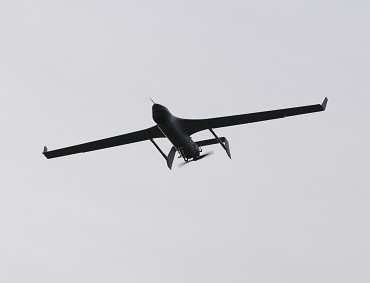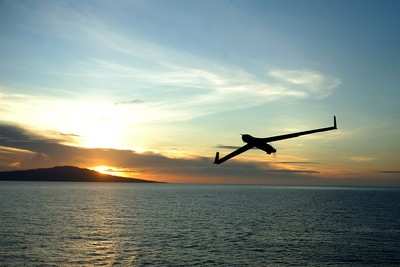Mon, Feb 08, 2010
Test Showed A 40 Percent Endurance Improvement
Insitu said Tuesday it has successfully flight-tested an
electronic fuel injection (EFI) heavy fuel engine (HFE) on its
Integrator unmanned aircraft. This technology is being incorporated
into Insitu's entire family of unmanned aircraft systems (UAS)
enhancing overall mission performance, especially in extreme
temperatures and at high altitudes, including mountainous
terrain.

Insitu Integrator
"We have now demonstrated HFE/EFI engine performance on both of
our Insitu unmanned aircraft, ScanEagle and Integrator. Our team
continues to focus on providing the best capabilities for our
commercial and military customers. This is yet another critical
enabling technology demonstrated in support of our STUAS (small
tactical unmanned aircraft system)/Tier II effort," said Vice
President of Emerging Programs Bill Clark. "Heavy fuel with
electronic fuel injection provides a 40 percent improvement in
mission endurance over the previously demonstrated capability. It
represents the next generation of our HFE technology, providing a
more reliable, safer and easier to operate and maintain engine, and
positions us well for our initial deployments later this year."
Integrator continues to demonstrate key capabilities such as a
communications relay payload, which enables mobile ground units to
exchange secure voice and data where line-of-sight obstructions
exist, and a ROVER 4 and ROVER 5 compatible encrypted digital data
link, allowing ground forces to securely view real-time data
streams on small laptop devices. The company also demonstrated a
runway-independent launch and recovery system for its entire family
of UAS, reducing the overall operational footprint and total
ownership costs.
The mature design of the Integrator evolved from ScanEagle-the
field-proven UAS serving in theater for more than five years.
Building from this strong foundation, Integrator provides expanded
plug-and-play payload capacity and a modular design. Integrator can
fly multiple mission payloads simultaneously, providing
high-quality information to forces on land and at sea.

Insitu Insight
Insitu's ScanEagle HFE recently logged more than 3,800
operational flight hours meeting the system safety and logistics
requirements aboard maritime vessels, while increasing system
endurance. The HFE technology was a critical requirement of the
U.S. Navy when deciding to place Insitu UAS on DDG-class ships.
More News
Also: Outlaw Prop 4 Mooney, Ready 4 Duty, Ukrainian F-16 Pilot Lost, Blue Origin Flt On his journey to become the first pilot to land solo on all seven continents, 19-year-old Etha>[...]
Also: DarkAero Update, Electric Aircraft Symposium, Updated Instructor Guide, OSH Homebuilts Celebrate The long-awaited Sonex High Wing prototype has flown... the Sonex gang tells >[...]
Discrete Code As used in the Air Traffic Control Radar Beacon System (ATCRBS), any one of the 4096 selectable Mode 3/A aircraft transponder codes except those ending in zero zero; >[...]
From 2023 (YouTube Edition): Deviation from the Historical Mean Racine, Wisconsin-based DeltaHawk is a privately-held manufacturer of reciprocating engines for aircraft and hybrid >[...]
Aero Linx: Formation and Safety Team (F.A.S.T.), USA The Formation and Safety Team (FAST) is a worldwide, educational organization dedicated to teaching safe formation flying in Wa>[...]
 Airborne 07.02.25: TikToker Arrested, Vietnam A/L Ground Hit, ATC Modernization
Airborne 07.02.25: TikToker Arrested, Vietnam A/L Ground Hit, ATC Modernization Airborne Affordable Flyers 07.03.25: Sonex HW, BlackShape Gabriel, PRA Fly-In 25
Airborne Affordable Flyers 07.03.25: Sonex HW, BlackShape Gabriel, PRA Fly-In 25 ANN's Daily Aero-Term (07.07.25): Discrete Code
ANN's Daily Aero-Term (07.07.25): Discrete Code Classic Aero-TV: DeltaHawk Aero Engine Defies Convention
Classic Aero-TV: DeltaHawk Aero Engine Defies Convention ANN's Daily Aero-Linx (07.07.25)
ANN's Daily Aero-Linx (07.07.25)




